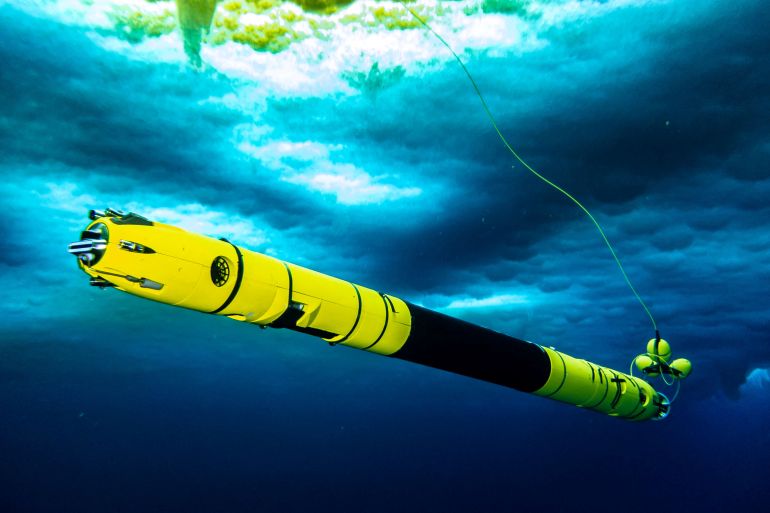Antarctica Doomsday Glacier: ‘We should all be very concerned’
Melting of the Florida-sized glacier is of grave concern, with the potential for significant global sea level rise.

Scientists studying Antarctica’s vast Thwaites Glacier – nicknamed the “Doomsday Glacier” – say warm water is seeping into its weak spots, threatening its demise and a massive sea rise.
Thwaites, which is roughly the size of Florida, represents more than half a metre (1.6 feet) of global sea level rise potential, and could destabilise neighbouring glaciers that could cause a further 3-metre (9.8-foot) rise.
Keep reading
list of 4 itemsUN chief blasts Big Oil for ‘peddling the big lie’ on climate
Four Indonesians take Swiss cement giant to court over climate
More Kenyans hit by climate change count on fish farming
As part of the International Thwaites Glacier Collaboration – the biggest field campaign ever attempted in Antarctica – a team of 13 scientists from the United States and United Kingdom spent about six weeks on the glacier in late 2019 and early 2020.
Using an underwater robot vehicle known as Icefin, mooring data and sensors, they monitored the glacier’s grounding line, where ice slides off the glacier and meets the ocean for the first time.
In one of two papers published on Wednesday in the journal Nature, led by Cornell University-based scientist Britney Schmidt, researchers found warmer water was making its way into crevasses and other openings known as terraces, causing sideways melt of 30 metres (98 feet) or more per year.
“Warm water is getting into the weakest parts of the glacier and making it worse,” said Schmidt. “That is the kind of thing we should all be very concerned about.”
The other paper’s findings, which Schmidt also worked on, showed about 5 metres (16 feet) per year of melt near the glacier’s grounding line – less than what the most aggressive thinning models previously predicted.
But she said the melting was still of grave concern.
“If we observe less melting … that doesn’t change the fact that it’s retreating,” Schmidt said.
‘Falling apart’
Scientists have previously depended on satellite images to show the behaviour of the ice, making it difficult to get granular details.
The papers represent the first time a team has been to the grounding line of a major glacier, providing a look right where “the action begins”, Schmidt said.
After warm water enters the crevices, fracturing “potentially accelerates the overall demise of that ice shelf”, said Paul Cutler, the Thwaites programme director for the National Science Foundation, who returned from the ice last week. “Its eventual mode of failure may be through falling apart.”
Ted Scambos of the National Snow and Ice Data Center, who was not part of the studies, said the results add to the understanding of how Thwaites is diminishing.
“Unfortunately, this is still going to be a major issue a century from now,” he said. “But our better understanding gives us some time to take action to slow the pace of sea level rise.”